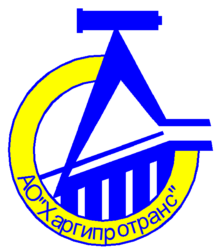Kharkov Design and Survey Institute of Transport Objects, now Joint Stock Company JSC “Hargiprotrans”, was founded in May 1931 in Kharkov, then the capital of Soviet Ukraine. On the basis of the design groups of the North Donetsk district of railways, the Kharkov branch of “Giprotrans” NKPS was organized, which was entrusted with the implementation of design and survey work on all types of construction of new railways and the reconstruction of existing ones. Its specialists carried out surveys not only in Ukraine, but also in the Far North, the Urals, the East, the Volga region, in the western regions of the Soviet Union, and were engaged in increasing the capacity of the Omsk, Tomsk, East Siberian and Transbaikal railways.

In the process of its formation, the institute has undergone a number of organizational and structural transformations. Its names have changed – Gosprojecttrans, Proektput, Khartransproekt. By 1936, when the management of the design of transport facilities was concentrated in Soyuztransproekt NKPS, it turned into a large design and survey organization with a staff of up to 800 people. During the Great Patriotic War, all the activities of the institute were aimed at meeting the needs of the front. A significant part of the employees defended the Motherland with weapons in their hands, as part of the front-line brigades, they participated in the restoration of destroyed transport communications. The main staff of the institute in difficult wartime conditions, as part of field expeditions, carried out surveys, design, and was directly involved in the construction of a number of important transport facilities of defense significance. For exemplary performance of tasks during the war years, 188 employees were awarded military awards. Since March 1951 Khartransproekt has been transformed into Kharkiv State Design and Survey Institute “Khargiprotrans”. In 1954, it was included in the Glavtransproekt of the USSR Ministry of Transport Construction.
The main developments of those years were the railways Moscow-Donbass, Konosha – Kotlas – Kozhva, Sosva – Alapaevsk, Usolye – Fosforitnaya, Pinyug – Syktyvkar, Kazan – Bu-gulma, Tula – Sukhinichi; the second routes Saratov – Rtischevo, Balashov – Valuyki, Osnova – Lgov; reconstruction of the sections Kirov – Kotlas, Penza – Kuznetsk, Talovaya – Balashov, Kursk – Prokhorovka; development of large railway junctions – Kharkov, Minsk, Tashkent, Penza, Gorky, Baranovichi, Ozherele.

For more than 70 years of activity, 3900 km of new railways have been built on the projects of the institute. The most significant railway lines: Zverevo – Krasnodonetskaya, Zanki – Korobochkino, Merefa – Zmiev, Budy – Shpakovka, Ocheretino – Gorlovka, Gornaya – Ust Donetskaya, Armyaz – Saygat-ka, Volsk – Balakovo, Kurdyum – Lipovsky and others. More than 4100 km of second tracks have been built, including such directions and sections as Kanash – Agryz – Krasnoufimsk – Druzhinino, Vorozhba – Lyubotin, Lyubotn – Burty – Korystovka, Lozovaya – Romodan – Darnitsa, Saraevka – Lebedi – Stary Oskol, Sara-tov – Sennaya, Osnova – Zolochev, Zharyk – Moints, Osnova – Kupyansk, Ershov – Urbakh – Krasny Kut, Astrakhan – Upper Baskunchak, Tbilisi – Samtre dia. More than 10 thousand were transferred to diesel traction. km of separate directions of the network. Over 2500 km of lines have been electrified, in particular, the sections Kursk – Kharkov – Lozovaya, Osnova – Debaltsevo, Kupyansk – Valuyki – Povorino, Rossosh – Likhaya, Merefa – Vlasovka – Krasnograd, Kupyansk – Slavyanogorskaya, Vilnius – Kaunas, Trofimovsky – Tatishchevo, Ku- – Orenburg, Trusovo – Aksaraiskaya. The development of the existing ones was carried out and new nodes, sorting, cargo and passenger stations were built, including in Kharkov, Poltava, Kupyansk, Kremenchug, Lozovaya, Saratov, Volgograd, Astra-khani, Taishet.
In the last 30 years alone, about 500 medium-sized bridges and overpasses, over 5,000 small artificial structures, pedestrian bridges and tunnels, 12 thousand km of communication lines have been designed and built. Over 8000 km of railways are equipped with centralized dispatching and automatic blocking with electrical interlocking for over 9000 points. Designers made a particularly significant contribution to the development of the Southern, South-Eastern, Volga, Kazakh, Moscow railways, to the implementation of the tasks of social and economic development of the city of Kharkov and the Kharkov region.




Since the 70s, many specialists have participated in the development of projects for the reconstruction and development of the railway network of the Republic of Cuba, in the survey of the locomotive and carriage facilities of the Havana-Santiago de Cuba railway, in the reconstruction of the passenger carriage depot Luiano (Havana), freight carriage depot Comagüey , in the design and reconstruction of railway junctions and stations, in the development of a scheme for the reconstruction and development of the passenger railway network in the city of Havana, in the organization of the railway communication of the main line on the Havana-Santa Clara section, supervision over the construction of artificial structures (bridges and overpasses) on the railway network Cuba. Providing friendly assistance, our specialists worked in Mongolia on the construction of transport facilities, provided technical assistance in the training of national personnel, many of them were awarded Mongolian government awards. The Institute’s specialists have repeatedly participated in surveys, pre-design work and design of new railway lines in Iran, Iraq, Syria, Algeria, namely: in Iran Mashhad – Sarah – 150 km; in Syria Holmes – Alepa – 200 km, Damascus – Dara – 120 km; in Algeria Bu-Medfa-Ay Nussera – 400 km. For Iraq in 2001-2002, tender documents were developed for the design and construction of new railway lines in the southern direction Baghdad (Mu-saeb) – Samawa with a length of 240 km and in the northern direction of Baghdad – Kirkuk with a length of 250 km.

Since 2002, the institute has been directly involved in the development of working documentation for the organization of the movement of passenger trains at a speed of 140 km / h with the modernization of transport infrastructure facilities, feasibility studies for the organization of high-speed movement of passenger trains at a speed of 200 km / h on the main directions of the railway network of Ukraine and the Kiev-Kharkov super-high-speed line with a passenger train speed of 250 km / h, is developing a State target program for organizing high-speed passenger trains on the railway network of Ukraine for the near future until 2020.


